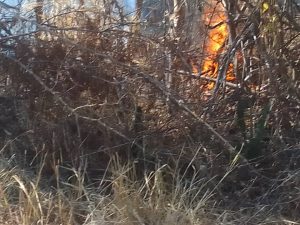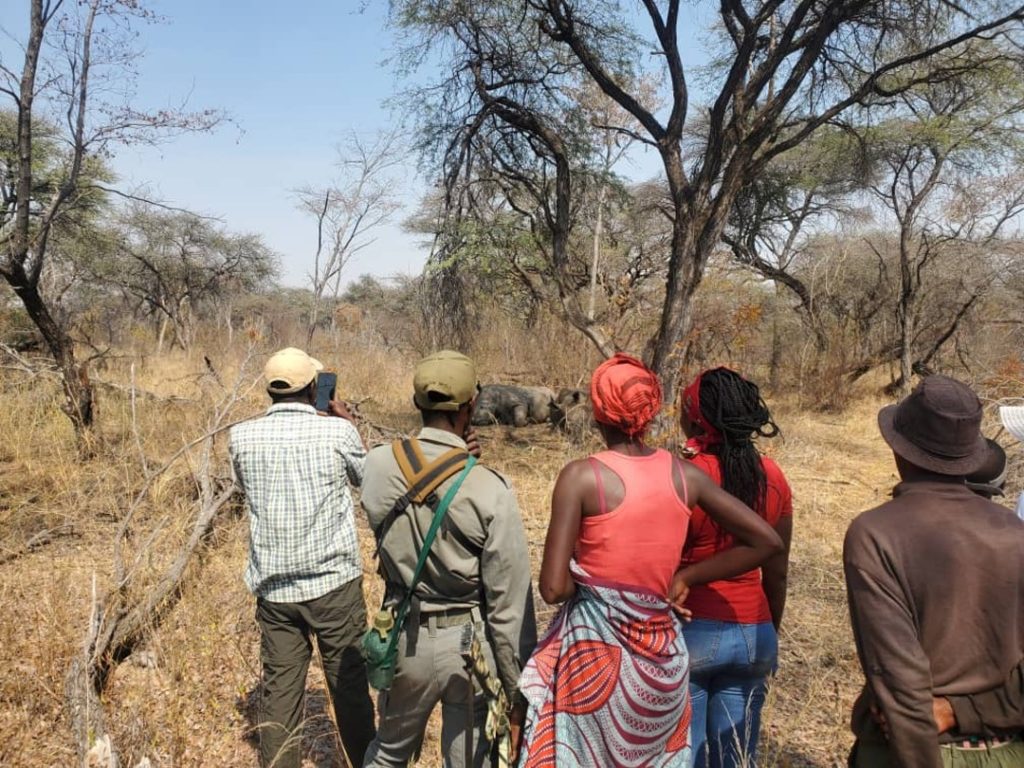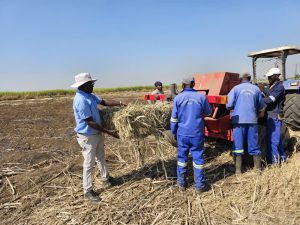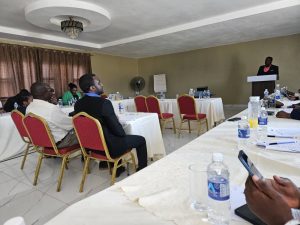Mary Mundeya
It is a chilly January afternoon and Baba Mlevu, an influential 89-year-old headman of Mlevu Ward in Zimbabwe’s Matebeleland North province, passionately describes how much he had longed to see white rhinos roaming free in Hwange’s southern grasslands.
“For years I was a sad man. My kinsmen and I grew up surrounded by a sizable number of white rhinos which we would constantly see, all of which vanished due to poaching. I was not sure if ever I was going to see those precious creatures again and I am glad that I can see them once again,” he said.
Baba Mulevu is one of the numerous headman from his district who gave up their prime livestock grazing land measuring one mile square to the Community Rhino Conservation Initiative (CRCI), a project which is the brainchild of Mark Butcher, a former game ranger and managing director of Imvelo Safari Lodges.
Butcher has a passion for Hwange’s wildlife and in May 2022, he helped re-introduce two white rhino bulls donated by a Malilangwe Conserbvancy which is situated in southeastern Zimbabwe.
The bold conservation initiative which took three years to execute received strong support from the local community and it intends to restore a viable population of white rhinos in a region where they were wiped out by poachers 20 years ago.
The local people who are already reaping benefits from the re-introduction of the white rhinos are more than elated.
“The community is thrilled to see the rhinos back in this area. Our children did not know what a rhino was, but they now have an opportunity to not only know them but guard them jealously,” said Johnson Ncube who is head of the nearby Ngamo village.
“Everyone now knows that a rhino means money when the people come and see it, but not when it’s dead. Having access to improved schools, safe and clean water from boreholes and healthcare is now within the reach of everyone,” He said.
According to Hannah Tranter, who is the Imvelo Trust director of community and conservation projects, tourists who have been flocking to see the rhinos pay $180, 40 percent of which goes to the community.
“We’re saying to the community, ‘We’re giving you the funds because you’re part of this rhino project. You decide within your communities what is needed and what is best’”
“They’re getting money because the rhinos are using their land, and it’s up to them whether they want to build a school or drill boreholes,” said Tranter.
She said the rest of the tourism revenue is split between maintaining the current project, by paying for infrastructure, vehicles and rhino food, and growing the project to establish a viable population of rhinos in Hwange. This includes investing in more technology, more scouts, and in communities that want to participate.
Over the years, life in wildlife-rich district has been hard with unemployment among young people being very high. For most, poaching and migrating mostly to South Africa was the way out but this could now change.
“Protecting the rhinos from poachers is top of everyone’s mind and we are elated that the ‘Cobras’ (professionally trained scouts who guard the rhinos) were recruited from our local community and they are compensated fairly. A lot of our young people now have better lives thanks to the re-introduction of the white rhino,” said Nyangana village head Busani Moyo whose own son is among the scouts.
“Wisdom Mdlongwa a former volunteer teacher from Sitambala Village is one the young people who went through the grueling Cobra selection process which included running 15 kilometers (10 miles) without a rest, pushing vehicles through the thick Kalahari sands of the district, and carrying a heavy rock on his shoulder.
If he hadn’t gotten the job as a scout, the 27-year-old would most probably have left for South Africa in order try and support his wife and child. He said he is glad that will no longer be the case, and if rhino tourism can help support him and others in the community, it is worth the effort.
“Our area is home to an endangered spice that has in no time transformed our lives for the better. It is our duty to guard them jealously and make sure that the project grows,” he said.
Zimbabwe is littered with failed community wildlife projects which locals usually claim were forced down their throats by authorities but this small sanctuary is breaking new ground and revealing that if done properly, public and private partnerships can go a long way not only in changing community perceptions on wildlife, but in establishing participatory integrated conservation methods too.






